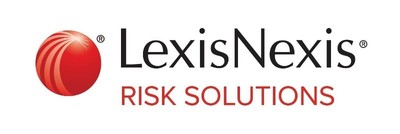Financial Fraud Executives Adopting Behavioral Biometrics to Counter Scam Attacks
LexisNexis® Risk Solutions has released a white paper, produced by Aite-Novarica, addressing challenges posed by sophisticated fraud threats amid rising digital adoption. The report highlights that a significant number of consumers have reduced their use of person-to-person (P2P) payment platforms due to fraud concerns, with 43% of U.S. respondents indicating such worries. Fraud executives rank consumer scams as a top concern, with many organizations increasingly adopting behavioral biometrics as a solution. This technology passively authenticates users, enhancing customer experience while identifying fraudulent activities. The white paper underscores the importance of multi-dimensional identity views in effective fraud prevention.
- Increasing adoption of behavioral biometrics enhances fraud prevention and customer experience.
- High satisfaction rates among fraud executives regarding behavioral biometric solutions.
- Behavioral biometrics analyzed user interactions to improve security without hindering user experience.
- 10% of U.S. consumers are using P2P services less due to fraud concerns.
- Significant fraud concerns lead to decreased trust in digital payment platforms.
Insights
Analyzing...
Fraud Prevention Experts Examine How Behavioral Biometrics Can Help Keep Customers Safe and Deliver an Optimal Customer Experience with Passive Authentication
ATLANTA, April 19, 2023 /PRNewswire/ -- LexisNexis® Risk Solutions published a white paper produced by Aite-Novarica exploring the challenges in addressing sophisticated fraud threats following increased digital adoption and consumers' high expectations for online transactions.
The white paper, Multifaceted Fraud Attacks: Behavioral Biometrics as a Defensive Tool, explains that most people are using person-to-person (P2P) payment platforms more frequently since the start of the pandemic. However, a consumer survey in the whitepaper reveals that
"Fraud executives are deeply concerned about increasing fraud attacks and the effect it has on consumers and their organization's reputation when losses occur," said Stephen Topliss, vice president, fraud and identity strategy, LexisNexis Risk Solutions. "Businesses need the most multi-dimensional view available of an identity to make high-quality decisions. Behavioral biometrics allows businesses to provide an optimal customer experience by passively authenticating them and only inserting additional steps into their journey if there is a higher risk."
Further findings in the white paper show that
An increasing number of organizations have begun implementing behavioral biometrics in their fraud operations. Fraud executives in North America rank their satisfaction with behavioral biometric solutions as second only to the risk engines they use, according to the white paper. Business users' satisfaction with behavioral biometrics ranked above more established approaches, including third-party identity verification, credit bureau scoring and device ownership and history verification.
"The adoption of behavioral biometrics technology is appealing from both a fraud prevention and customer experience perspective," said Jim Mortensen, strategic advisor at Aite-Novarica Group. "The capability is attractive as it authenticates users on a passive basis, in the background, and requires no active intervention by the customer beyond their normal use of the app or website."
Behavioral biometrics and related technologies for risk scoring can help organizations address fraud and authentication challenges. Behavioral biometrics analyzes how a person interacts with a device, including attributes such as the angle at which a consumer holds a mobile phone or tablet, how much pressure they apply to its screen, surface swipes and directional motion, as well as typing rhythm and other keyboard patterns. It works completely in the background without adding unnecessary friction to the consumer's journey to create a unique profile that can help authenticate genuine user interactions and flag bad actors and sessions where legitimate users may be acting under a bad actor's direction.
Financial fraud executives' most common concerns also include various types of losses because of application fraud, with bad checks, mule activity and synthetic identities all named among the top two worries by
A multi-layered set of risk solutions, including behavioral biometrics tools such as LexisNexis® BehavioSec®, enhances an organization's ability to detect scams by identifying distinct behavioral patterns. LexisNexis BehavioSec provides matching scores that indicate how likely it is that behavior is aligned with the genuine consumer or related to unusual behavior and coaching that indicates a scam.
Download the white paper Multifaceted Fraud Attacks: Behavioral Biometrics as a Defensive Tool by Aite-Novarica.
Methodology
The white paper was informed by Aite-Novarica Group's ongoing industry research on financial service industry trends related to fraud threat vectors and fraud detection and prevention frameworks. This research also includes insights from surveys of industry fraud executives and quantitative studies of consumers' fraud experience and mitigation efforts. It is further augmented by interviews with solution providers about topics that are top of mind to their prospective buyers and direct conversations with fraud and security professionals fighting to protect their financial services firms.
About LexisNexis Risk Solutions
LexisNexis® Risk Solutions harnesses the power of data and advanced analytics to provide insights that help businesses and governmental entities reduce risk and improve decisions to benefit people around the globe. We provide data and technology solutions for a wide range of industries including insurance, financial services, healthcare and government. Headquartered in metro Atlanta, Georgia, we have offices throughout the world and are part of RELX (LSE: REL/NYSE: RELX), a global provider of information-based analytics and decision tools for professional and business customers. For more information, please visit www.risk.lexisnexis.com and www.relx.com.
Media Contact:
Ade O'Connor
+44 78 9091 8264
ade.o'connor@lexisnexisrisk.com
![]() View original content to download multimedia:https://www.prnewswire.com/news-releases/financial-fraud-executives-adopting-behavioral-biometrics-to-counter-scam-attacks-301801184.html
View original content to download multimedia:https://www.prnewswire.com/news-releases/financial-fraud-executives-adopting-behavioral-biometrics-to-counter-scam-attacks-301801184.html
SOURCE LexisNexis Risk Solutions








